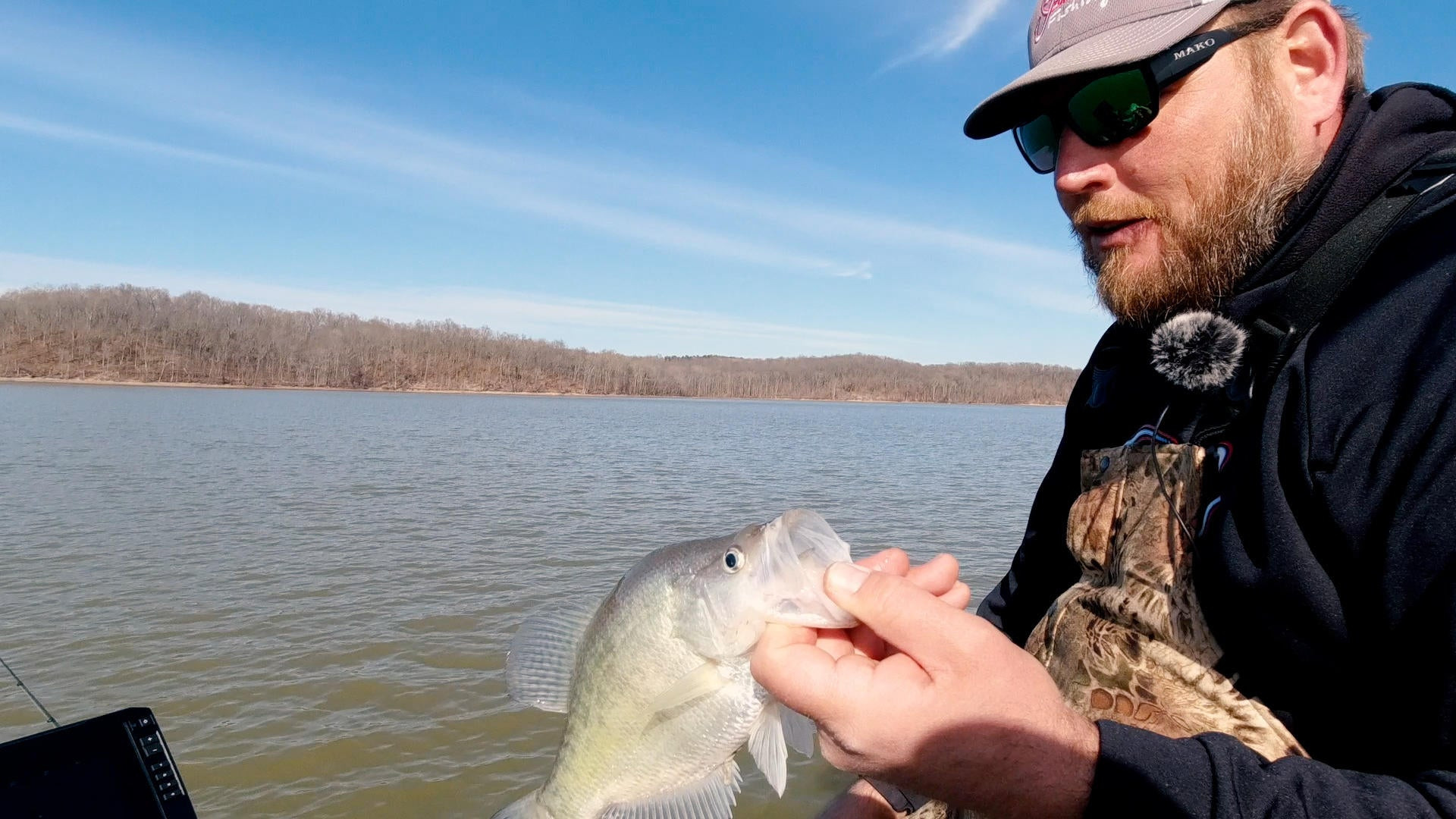We spent a day on the water with Tony Sheppard stalking open water crappie in the prespawn as they migrate back into creeks on their way to spawning flats. This can be a tough transition time for crappie fishing because the fish spread out as they meander back to spawning areas, and this is when spider rigging, pushing jigs and long line trolling get really popular for just covering water and haphazardly picking up roaming open water crappie here and there.
But more anglers are moving away from the multiple rod trolling approach and actually getting a spinning rod and fishing for roaming fish individually. Finding where creeks and sloughs intersect deep flats on the way to shallow spawning areas are the best places to start. Scan around to find the deep creek channels and where they intersect deep flats and start hunting fish.
Forward facing sonar like Livescope helps speed up the process and makes you more precise with your casts to individual fish. You can also scan edges the channels with traditional sonar and see what depths the fish are relating too and make casts or vertical jig in those areas being careful to work your baits at the right depths the crappie are using.
You will often find fish suspending at certain depths either high in the water column sunny and warming themselves or low just off of bottom relating to bait. And often times you can tell which fish are moving to spawn based on how they are positioning. The fish up high are generally further along and closer to their spawn time.
On this day we had just gotten through a week long cold front and were searching for fish moving back to spawn with some seriously cold water temps. But the fish would still follow jigs and bite when being cast from spinning tackle at a distance. Keeping our distance on the fish was key to getting bites.
Fishing Gear Used:
- Rod: Jenko Fishing Trick Stick Light
- Reel: Daiwa Ballistic
- Line: K9 10-pound Braided Fishing Line
- Lures: Jenko Warbird Hair Jig, Jenko Paddle Fry
- Electronics: Garmin EchoMap 126sv, Garmin Livescope











